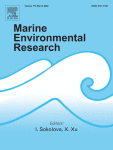Environmental conditions constrain nursery habitat value in Australian sub-tropical estuaries
Highlight
- •
Identifying nursery grounds is necessary for the long-term sustainability of fish stocks
- •
Tidal connectivity patterns and habitat structure are strong predictors of juvenile presence
- •
Knowledge of species-specific constraints can assist management of early life-history stages
Abstract
High quality nursery grounds are important for species success and the long-term sustainability of fish stocks. However, even for important fisheries species, what constitutes nursery habitats is only coarsely defined, and details of specific requirements are often lacking. In this study we investigated upstream estuarine areas in central Queensland, Australia, to identify the environmental factors that constrain nursery ground utilization for important fisheries species. We used unbaited underwater video cameras to assess fish presence, and used a range of water quality sensors to record fluctuations in environmental conditions, likely to influence juveniles, over several months (e.g. tidal connection patterns, temperature, salinity and dissolved oxygen). We found that juveniles of three fisheries target species (Lutjanus argentimaculatus, Lutjanus russellii and Acanthopagrus australis) were common in the upstream sections of the estuaries. For each species, only a subset of the factors assessed were influential in determining nursery ground utilization, and their importance varied among species, even among the closely related L. argentimaculatus and L. russellii. Overall, tidal connectivity and the availability of complex structure, were the most influential factors. The reasons for the importance of connectivity are complex; as well as allowing access, tidal connectivity influences water levels, water temperature and dissolved oxygen – all important physiological requirements for successful occupation. The impact of variation in juvenile access to food and refuge in nursery habitat was not directly assessed. While crucial, these factors are likely to be subordinate to the suite of environmental characteristics necessary for the presence and persistence of juveniles in these locations. These results suggest that detailed environmental and biological knowledge is necessary to define the nuanced constraints of nursery ground value among species, and this detailed knowledge is vital for informed management of early life-history stages.


